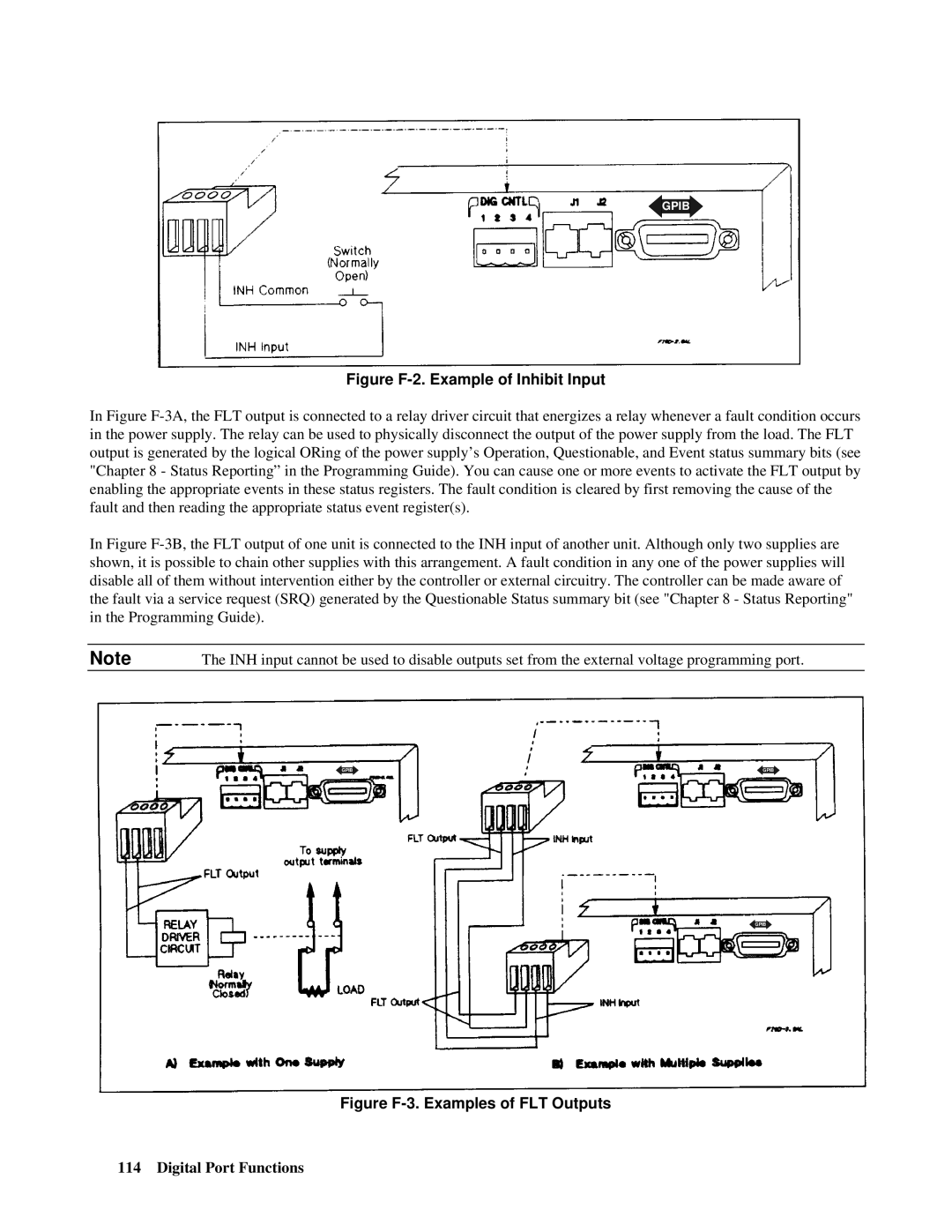
![]() GPIB
GPIB![]()
Figure F-2. Example of Inhibit Input
In Figure F-3A, the FLT output is connected to a relay driver circuit that energizes a relay whenever a fault condition occurs in the power supply. The relay can be used to physically disconnect the output of the power supply from the load. The FLT output is generated by the logical ORing of the power supply’s Operation, Questionable, and Event status summary bits (see "Chapter 8 - Status Reporting” in the Programming Guide). You can cause one or more events to activate the FLT output by enabling the appropriate events in these status registers. The fault condition is cleared by first removing the cause of the fault and then reading the appropriate status event register(s).
In Figure F-3B, the FLT output of one unit is connected to the INH input of another unit. Although only two supplies are shown, it is possible to chain other supplies with this arrangement. A fault condition in any one of the power supplies will disable all of them without intervention either by the controller or external circuitry. The controller can be made aware of the fault via a service request (SRQ) generated by the Questionable Status summary bit (see "Chapter 8 - Status Reporting" in the Programming Guide).
Note | The INH input cannot be used to disable outputs set from the external voltage programming port. |
GPIB | GPIB |
![]() GPIB
GPIB![]()
